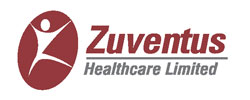Overview of EPR Fulfillment in Plastic Waste Management
Plastic, invented in 1907, quickly became a popular material due to its affordability and convenience.
Today, it is integral to many aspects of modern life, from currency to electronic devices, and spans
numerous industries, including packaging, construction, transportation, machinery, and healthcare.
Under the Plastic Waste Management Rules, individuals and entities responsible for generating plastic
waste are required to take measures to minimize waste generation, avoid littering, ensure waste is
stored separately at the source, and hand over segregated waste to local authorities or authorized
agencies. These rules also outline the duties of local bodies, gram panchayats, waste generators,
retailers, and street vendors in managing plastic waste.
Extended Producer Responsibility (EPR) places the onus on producers, importers, and brand owners to
ensure the collection and recycling of plastic packaging waste. This responsibility encompasses both
pre-consumer and post-consumer plastic packaging waste.
Obligated Entities under EPR Fulfilment in Plastic Waste Management
Plastic waste processors are required to submit annual returns by April 30th of the following financial
year. These returns must detail the quantity of plastic waste processed, categorized by type and state,
and submitted via the centralized portal managed by the Central Pollution Control Board (CPCB).
Additionally, the total amount of plastic waste processed and attributed to Producers, Importers, and
Brand Owners (PIBOs) on an annual basis will be available on the CPCB's centralized portal and on the
plastic waste processors' websites.
If, at any point, it is discovered that the plastic waste processor has provided false information, the
State Pollution Control Board (SPCB), following CPCB guidelines, will bar the processor from
participating in the EPR framework for a period of five years.
Plastic Packaging Waste Collection System by PIBOs
To fulfill their EPR obligations, Producers, Importers, and Brand Owners (PIBOs) are encouraged to
support the development of collection and segregation infrastructure for plastic packaging waste,
tailored to the specific types of plastics involved. Depending on the EPR implementation model adopted
by the PIBO, this may include:
 Establishing plastic
waste collection points and Material Recovery Facilities (MRFs).
Establishing plastic
waste collection points and Material Recovery Facilities (MRFs). Ensuring regular
collection of plastic packaging waste from these collection points, proportionate to the area
covered and the volume of waste generated.
Ensuring regular
collection of plastic packaging waste from these collection points, proportionate to the area
covered and the volume of waste generated. Offering plastic
waste collection services to entities such as Urban Local Bodies, gram panchayats, public
authorities, or third-party waste management entities. PIBOs must make practical arrangements
for collection and transportation and ensure that all entities utilizing these services are
covered.
Offering plastic
waste collection services to entities such as Urban Local Bodies, gram panchayats, public
authorities, or third-party waste management entities. PIBOs must make practical arrangements
for collection and transportation and ensure that all entities utilizing these services are
covered. Guaranteeing that
collected plastic packaging waste is directed to registered recycling facilities or processed
for permitted end uses.
Guaranteeing that
collected plastic packaging waste is directed to registered recycling facilities or processed
for permitted end uses.
 Ensuring that the
network of collection points is not limited to profitable areas, but considers population size,
expected waste volume, accessibility, and proximity to end-users. Waste collection companies
should then deliver the collected waste to designated end uses or facilities for recycling and
treatment. Voluntary collection points may also participate by handing over plastic packaging
waste to PIBOs or authorized third-party agencies for treatment, recycling, or identification of
end uses.
Ensuring that the
network of collection points is not limited to profitable areas, but considers population size,
expected waste volume, accessibility, and proximity to end-users. Waste collection companies
should then deliver the collected waste to designated end uses or facilities for recycling and
treatment. Voluntary collection points may also participate by handing over plastic packaging
waste to PIBOs or authorized third-party agencies for treatment, recycling, or identification of
end uses.
EPR Fulfillment in Plastic Waste Management
When filing annual returns on the online portal, Producers, Importers, and Brand Owners (PIBOs) must
submit details of recycling certificates obtained from registered recyclers, along with the quantity of
plastic sent for end-of-life disposal. These returns must be filed by April 30th of the following fiscal
year. The online portal will cross-verify the data submitted by PIBOs and registered plastic waste
processors. In case of any discrepancies, the lower quantity will be considered toward the PIBO's EPR
obligation. The certificates submitted will be subject to verification by the CPCB, SPCB, or PCC, as
applicable.
Documents Required under EPR fulfilment in Plastic Waste Management
 Legal Name (as per
GST)
Legal Name (as per
GST) Trade Name (as per
GST)
Trade Name (as per
GST) Business Type (e.g.,
Private, Public, Proprietorship, Co-operative, etc.)
Business Type (e.g.,
Private, Public, Proprietorship, Co-operative, etc.) Company
Classification (Micro, Small, Medium, Large) along with supporting documentation
Company
Classification (Micro, Small, Medium, Large) along with supporting documentation Registered Address of
the Entity
Registered Address of
the Entity Company PAN Card
Number (validated on the portal)
Company PAN Card
Number (validated on the portal) Company CIN Number
(mandatory for companies registered under the Companies Act, validated on the
portal)
Company CIN Number
(mandatory for companies registered under the Companies Act, validated on the
portal) Name and Designation
of the Authorized Person
Name and Designation
of the Authorized Person Mobile Number of the
Authorized Person
Mobile Number of the
Authorized Person PAN Details of the
Authorized Person
PAN Details of the
Authorized Person Aadhaar Details of
the Authorized Person (optional)
Aadhaar Details of
the Authorized Person (optional)
Challenges in EPR Fulfillment for Plastic Waste Management
The negative impacts of plastic pollution have sparked a global call to action, urging countries to
combat this growing issue. However, several challenges persist in fulfilling Extended Producer
Responsibility (EPR) obligations in plastic waste management:
- Limited Separation and Recycling Activities
Separation and recycling activities
at the source, especially at the household level, remain limited. Recovery efforts primarily
focus on high-value plastics, but these activities are still largely driven by informal sectors,
such as waste pickers who collect recyclables door-to-door. As a result, a significant portion
of high-value recyclable packaging ends up in landfills or leaks into the environment.
- Limited Number of Recycling Facilities
Despite the abundance of high-value
recyclable plastics, the limited number of recycling facilities, which are primarily located in
central regions, often prevents effective recycling. Low recovery rates further exacerbate this
issue, forcing some large recyclers and aggregators to import plastic waste for processing.
- High Volume of Low-Value Plastics and Non-Recyclables
Low-value plastics and
non-recyclables, such as flexible films, sachets, and composites, pose significant challenges
due to their low economic return. Collecting enough of these materials to meet minimum weight
thresholds is time-consuming, and they are typically bought at very low prices. Additionally,
recycling certain items, like sachets, requires specialized equipment. Consequently, these
materials often end up in landfills or contribute to environmental pollution.
Benefits of EPR Fulfillment in Plastic Waste Management
Extended Producer Responsibility (EPR) in plastic waste management offers numerous advantages, fostering
a more sustainable and environmentally conscious approach to managing plastic waste. Key benefits of EPR
fulfillment include:
- Promotion of Recycling
EPR drives the development of efficient recycling
processes. Producers, motivated by their obligations, invest in recycling technologies and
infrastructure, resulting in increased plastic recycling. This reduces the need for new plastic
production and conserves valuable resources.
- Job Creation
The implementation and maintenance of recycling facilities and
collection systems through EPR programs generate employment opportunities. These initiatives
create jobs in waste collection, sorting, processing, and related industries, contributing to
the local economy.
- Reduction in Plastic Pollution
EPR programs promote the proper collection,
recycling, and disposal of plastic products. By making producers accountable, these programs
lead to a significant reduction in plastic pollution in natural environments, including oceans,
rivers, and forests, resulting in a cleaner, healthier planet.
Steps to Follow for EPR Fulfillment in Plastic Waste Management
Fulfillment of Extended Producer Responsibility (EPR) in plastic waste management involves several steps
and documentation, making it a complex process for individuals. The key steps include:
- Register on the centralized portal developed by the Central Pollution Control Board (CPCB).
- Producers, Importers, and Brand Owners (PIBOs) need to establish their EPR targets.
- Meet obligations related to recycling.
- Ensure proper disposal of end-of-life products.
- Comply with requirements for incorporating recycled plastic content.
- Brand owners must fulfill obligations related to the reuse of plastic, if applicable.
- Fulfill all Extended Producer Responsibility (EPR) obligations.
- File annual returns on the quantity of plastic waste processed, submitted by both waste
processors and PIBOs.
- The State Pollution Control Board (SPCB) or Pollution Control Committee (PCC) must submit an
annual report on EPR compliance by PIBOs and Plastic Waste Processors (PWPs) to the CPCB.
Role of Producers, Importers, and Brand Owners in EPR Fulfillment for Plastic Waste Management
Producers, Importers, and Brand Owners (PIBOs) play key roles in the Extended Producer Responsibility
(EPR) framework for plastic waste management. Their responsibilities include:
- PIBOs must register through the Central Pollution Control Board’s (CPCB) online centralized
portal. A registration certificate will be issued upon successful registration.
- PIBOs are required to submit an Action Plan through the CPCB portal. This plan should detail the
EPR targets, categorized as needed, along with the registration or renewal application under the
Plastic Waste Management (PWM) Rules, 2016.
- Brand Owners must report the details of plastic packaging purchased from Producers and/or
Importers separately. Quantities attributed to each Producer and Importer will be deducted from
their respective obligations.
- Producers and Importers are responsible for maintaining records of the quantity of plastic
packaging material supplied to Brand Owners.
- Producers, Importers, and Brand Owners must file annual returns by June 30th of the following
financial year. These returns should detail the plastic packaging waste collected and processed
to meet EPR obligations, and must be submitted to the CPCB or the relevant State Pollution
Control Board (SPCB) or Pollution Control Committee (PCC) as prescribed by the CPCB.
Categories of Plastic under EPR Fulfilment in Plastic Waste Management
Different types of plastics possess different characteristics. According to Plastic Waste Management
Rules, 2016, there are seven categories of plastics on the basis of their recyclability:
| SL NO. |
Category |
| 1 |
Polyethylene Terephthalate (PET) |
| 2 |
High-Density Polyethylene (HDPE) |
| 3 |
Poly Vinyl Chloride (PVC) |
| 4 |
Low-Density Polyethylene (LDPE) |
| 5 |
Polypropylene (PP) |
| 6 |
Polystyrene Resins (PS) |
| 7 |
Multi-materials like Acrylonitrile Butadiene Styrene, Polyphenylene Oxide, Polycarbonate,
Polybutylene Terephthalate |
Why Choose SeaRoot for Battery Waste Management?
- SeaRoot specializes in trademark import and export, leveraging extensive experience and industry knowledge to streamline complex processes.
- SeaRoot offers expert assistance in obtaining Hallmark Registration Certificates, ensuring compliance with industry standards and enhancing credibility.
- SeaRoot provides tailored solutions to meet specific business needs, adapting to various industries and requirements for efficient import-export operations.
- SeaRoot adheres to rigorous quality standards and regulatory requirements, ensuring that all processes and certifications meet the highest standards.
- SeaRoot is proficient in EPR fulfillment and plastic waste management, supporting businesses in complying with environmental regulations and promoting sustainable practices.
- SeaRoot's established connections within the industry facilitate smooth operations and access to valuable resources and partnerships.
Frequently Asked Questions
1.Who is responsible for EPR fulfillment?

Producers, importers, and brand owners (PIBOs) are responsible for fulfilling EPR obligations. They must manage and report on the plastic waste generated from their products.
2. How do PIBOs register for EPR?

PIBOs must register on the centralized portal developed by the Central Pollution Control Board (CPCB). A registration certificate will be issued upon successful registration.
3. What is an EPR Action Plan?

An EPR Action Plan is a document submitted by PIBOs that outlines their strategies and targets for managing plastic waste, including collection, recycling, and disposal. It is submitted through the CPCB portal.
4.What documents are needed for EPR fulfillment?

Required documents include the legal name, trade name, business type, company classification, registered address, PAN and CIN numbers, and details of the authorized person, among others.
5.What challenges are faced in EPR fulfillment?

Challenges include limited separation and recycling activities at the source, a shortage of recycling facilities, and a high volume of low-value plastics that are difficult to manage and recycle.
6.How does EPR benefit plastic waste management?

EPR promotes recycling, creates job opportunities, and reduces plastic pollution by ensuring proper collection, recycling, and disposal of plastic products.









